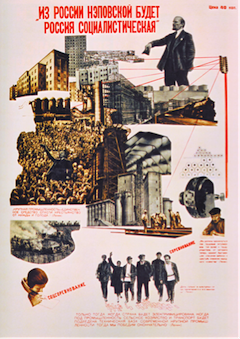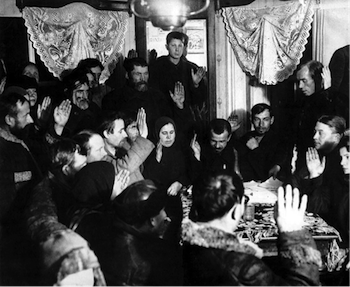

|
What Did the NEP Do for the Peasants?  'From NEP Russia to Socialist Russia' Lenin believed that the key to the NEP was the development of rural cooperatives, through which the peasants could sell their produce at fixed rates of exchange for consumer goods, receive credit to purchase tools, and obtain agronomic aid. It was a measure of the NEP's success that 50 % of Soviet peasant households belonged to an agricultural co-operative by 1927. Thanks in part to the agronomic aid of the cooperatives there was a steady rise in productivity. The 1913 levels of agricultural production were regained by 1926, and surpassed in the next two years. The harvest yields of the mid-1920s were 17 % higher than those of the 1900s, the so-called 'golden age' of Russian agriculture. The long-term plan of the Bolsheviks was to set up collective farms (kolkhozes) where production could be mechanized and the state could guarantee its food supply through fixed contracts with these farms. Under the NEP it was generally agreed that collectivization was to be a gradual and voluntary process: the state encouraged the collective farms through financial and agronomic aid.  Arkadii Shishkin: 'We are for the kolkhoz' (1929) After 1927, greater pressure was exerted through taxation policies - giving credits to collective farms and and imposing heavy fees on so-called 'kulak' farms - and the collective sector grew more rapidly. The peasants were attracted to the smaller, more informal and 'peasant-like' collectives called TOZes (where the land was farmed in common but the livestock and the tools were retained by the peasants as their private property) but were less interested in the larger kommuny (where all the land, animals and tools were handed over to the collective), as these figures indicate:
The trend suggests that, if it had continued for a few more years, the NEP might have overseen the development of a significant collective farming sector with the support of the peasantry to feed the urban sector more efficiently. The catastrophe of collectivization stemmed not from the principle itself but from Stalin's murderous policy of forcing all the peasants into the collective farms. |
||||||||||||||||||||||||||||
© 2014 Orlando Figes | All Rights Reserved